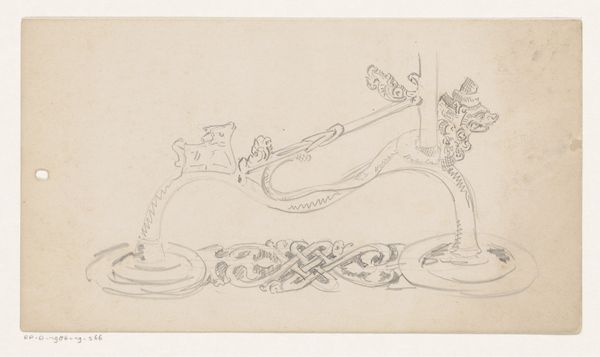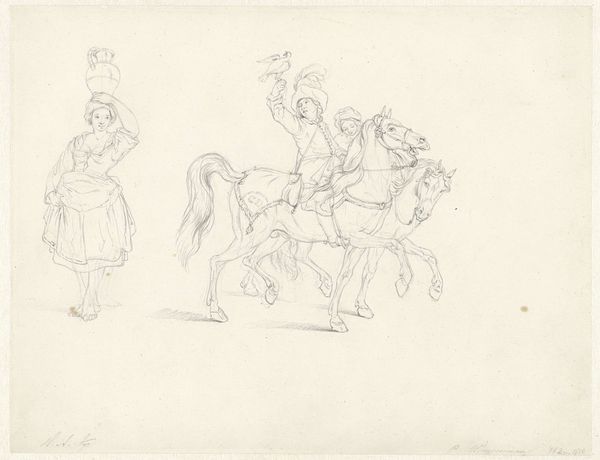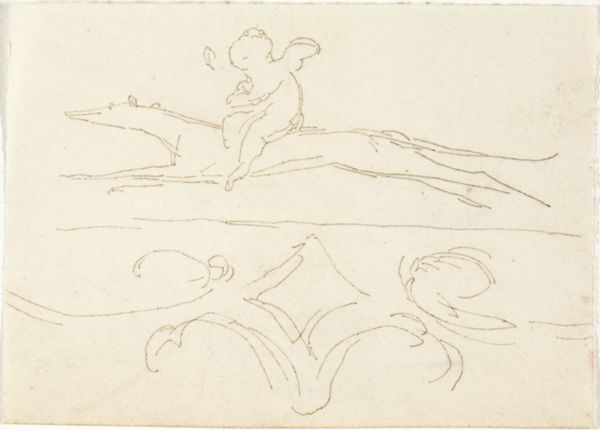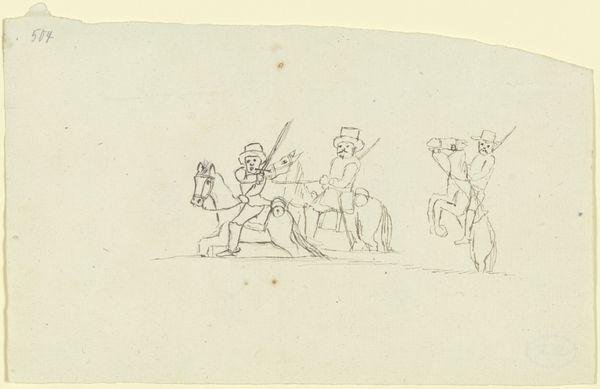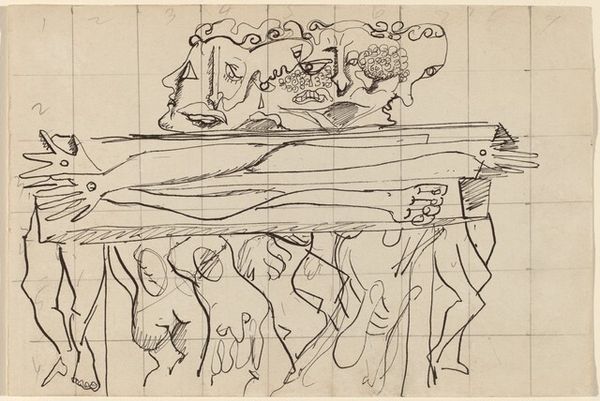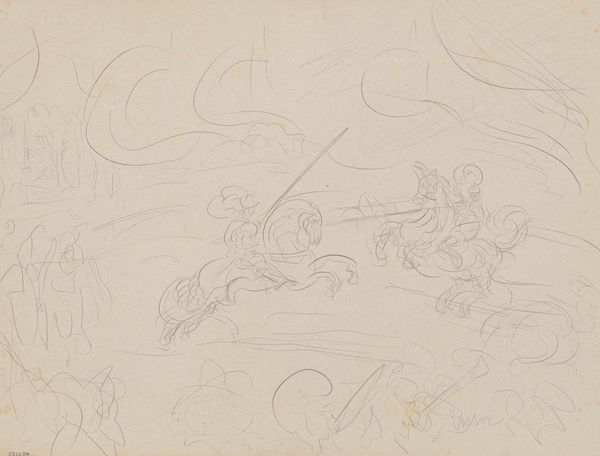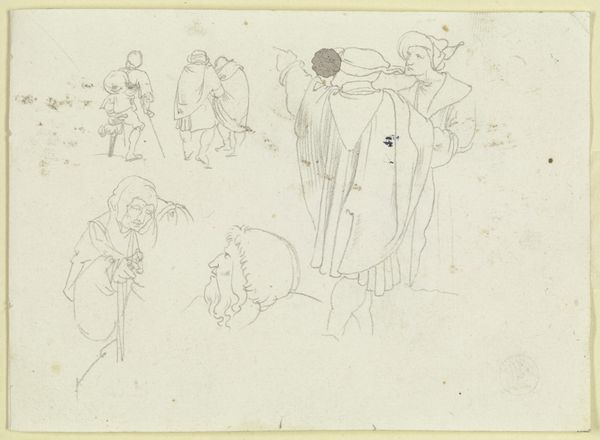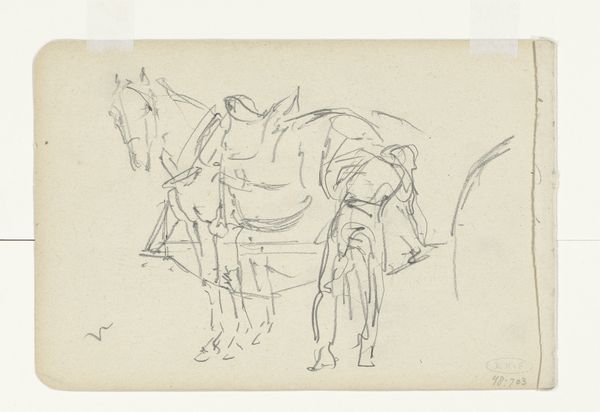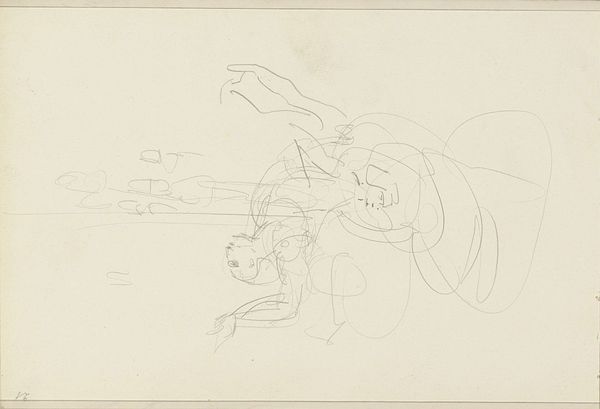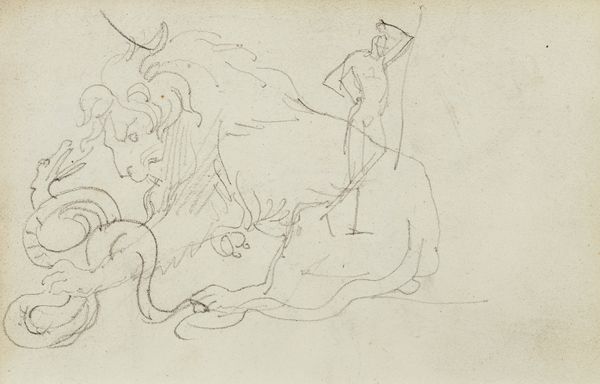
drawing, pencil
#
drawing
#
dutch-golden-age
#
pen sketch
#
landscape
#
figuration
#
pencil
#
genre-painting
#
realism
Dimensions: height 155 mm, width 253 mm
Copyright: Rijks Museum: Open Domain
Curator: Gesina ter Borch, a Dutch Golden Age artist, created this drawing around 1656. It is titled "Paar in een door een paard getrokken arrenslee", depicting a couple in a horse-drawn sleigh, and it’s currently housed at the Rijksmuseum. Editor: What strikes me is its immediacy, a snapshot of movement captured with minimal yet confident lines. The raw texture of the pencil work against the blank page enhances its energetic feel. Curator: Indeed, the very sparseness contributes to its realism. Consider how the artist conveys form and perspective through swift strokes, building volume and suggesting light and shadow. The horse's anatomy, though rendered quickly, is convincing, as is the implied depth of the sleigh gliding across the snow. Editor: Beyond the formal qualities, sleigh rides often symbolize romance and status in that period. Do you see any coded elements pointing to class distinctions and perhaps even courtship rituals? Curator: The figures' attire speaks to a certain social standing—the feathered hats, the draping of fabric. In the Golden Age, outward appearance was so important. I'm curious how it also references wider winter symbolism within Dutch culture. This imagery echoes broader cultural ideas of warmth amid the cold, love despite adversity. Editor: Fascinating point, these drawings can speak of courtship in that historical moment and time period. Let us note as well how her gender identity shapes the scene - capturing the daily experience of women and class position. Her visual vocabulary speaks of cultural meanings inherent in winter genre-painting. Curator: Certainly. Ter Borch's background offers further depth to its analysis, offering unique lens for scrutinizing historical norms and gender expectations that are captured through each compositional element. Editor: Indeed. As a glimpse into 17th-century Dutch culture viewed from unique women's eyes, this drawing presents a multi-layered study beyond simple formal concerns. It invites inquiries and offers much insight and further discussions.
Comments
No comments
Be the first to comment and join the conversation on the ultimate creative platform.

